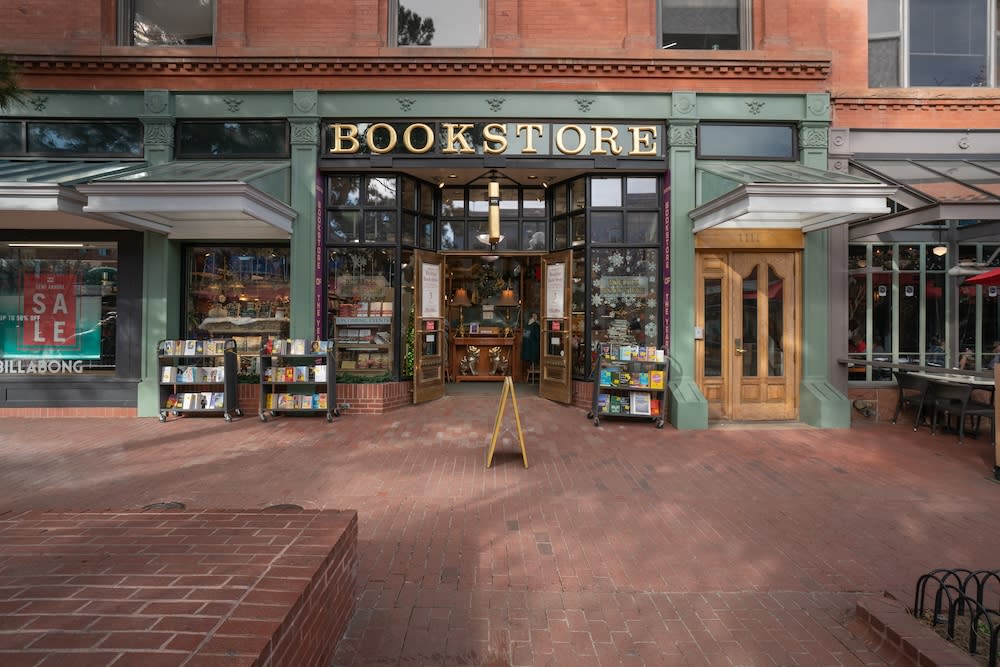How Independent Bookstores Rewrote the Rules of Retail Survival
In an era when Amazon was supposed to kill every brick-and-mortar retailer, independent bookstores did something extraordinary: they didn't just survive, they thrived. A Harvard Business School study revealed how a sector written off for dead achieved a remarkable 49% growth between 2009 and 2018, offering a masterclass in retail resilience that specialty fly fishing retailers can adapt for their own growth, including how to turn the threat of vendor direct-to-consumer sales into a competitive advantage. The David vs. Goliath Story When Amazon launched in 1995, independent bookstores faced what seemed like certain extinction. By 2009, their numbers had plummeted to an all-time low of just 1,651 stores. Yet instead of disappearing, these small retailers engineered one of the most unexpected comebacks in retail history, growing to 2,470 stores by 2018. Their secret wasn't competing on Amazon's terms, it was redefining what retail could be. The Three Pillars of the Comeback: The "3C" Strategy The study identifies three core strategies that drove this resurgence, each offering direct parallels for specialty fly fishing retailers: Community: Independent bookstores became champions of the "shop local" movement, helping customers understand that their purchasing decisions were votes for their community's economic future. They positioned themselves not as mere retailers, but as essential threads in the local fabric. Curation: Rather than compete with Amazon's vast inventory, bookstores focused on the art of "handselling" using deep expertise to match customers with exactly the right book. They became literary matchmakers, offering personalized recommendations that algorithms couldn't replicate. Convening: Bookstores transformed from simple retail spaces into community gathering places, hosting hundreds of events annually, author readings, book clubs, children's story time, and even birthday parties. They became "third places" where like-minded people could connect. Turning the D2C into an Advantage Just as bookstores faced publishers selling directly to consumers, fly shops now contend with manufacturers selling directly online. However, the bookstore model shows how retailers can transform this apparent threat into a strategic advantage through smart positioning and partnership. The "Showroom Partnership" Strategy: Independent bookstores learned to work with publishers rather than against them, often hosting author events that drove sales both in-store and online, with everyone benefiting. The "Local Intelligence" Advantage: Bookstores succeeded by knowing their local readership better than any national retailer could. They understood which books would resonate with their specific community and could predict local trends. For fly shops: Your local knowledge becomes your competitive moat. You know that Brand X waders don't hold up well in your region's rocky streams, or that Brand Y's emerger patterns consistently outperform others in your local waters. When customers research online but need local intel, you become the essential final step in their purchasing journey, regardless of where they ultimately buy. The "Service Integration" Model: Successful bookstores began offering services that complemented product sales, book clubs, educational events, special ordering, and personalized recommendations. They made themselves valuable beyond the transaction. For fly shops: When vendors sell direct, they typically can't offer rod rigging, reel servicing, local fishing reports, or on-site repairs. Position yourself as the "service hub" for all fly fishing gear, regardless of where it was purchased. This creates ongoing customer relationships and revenue streams while making you indispensable to the local angling community. The Digital Paradox: Using Technology to Strengthen Physical Connections Surprisingly, successful bookstores didn't shun digital tools; they used them strategically. Social media platforms like Instagram (#bookstagram has over 25 million posts) have become powerful tools for building community and showcasing the in-store experience. The key was using digital channels to drive people into the physical store, not replace it. The D2C Advantage: Smart fly shops can leverage their vendors' D2C efforts as content fuel, reviewing new products, comparing options, and positioning themselves as local experts who help customers navigate the overwhelming online options. When Patagonia releases a new wading jacket, you become the local authority who explains how it performs in your conditions, creating content that drives engagement, whether customers buy from you or directly. Beyond Competition: The Power of Collective Action The study reveals how the American Booksellers Association played a crucial role by sharing best practices, negotiating group partnerships, and reinforcing shared values across the sector. Independent bookstores succeeded not just individually, but collectively, learning from each other and raising the entire sector's game. For fly shops: Work with other independent retailers and industry associations to establish your collective value to manufacturers. When vendors understand that independent retailers drive product education, local market development, and brand advocacy, they're more likely to structure their D2C efforts in ways that complement rather than compete with specialty retail. Real-World Applications for Fly Shops The bookstore model offers several actionable strategies for navigating the D2C landscape: • Reframe your value proposition: You're not just selling flies and rods you're selling access to local expertise, community connection, and authentic experiences that can't be downloaded or shipped overnight. Even D2C customers need this. • Become the "try before you buy" destination: Partner with vendors to offer demo programs, fitting services, and trial periods that their direct sales can't match. • Leverage your role as educator: Host regular educational events featuring vendor products. Make yourself indispensable for product knowledge and local application. • Create vendor partnership programs: Develop formal arrangements where you serve as the local "brand ambassador" or "experience center" for key vendors, earning referral fees or service contracts even when sales go direct. • Build strategic partnerships: Work with local guide services, conservation groups, and other outdoor retailers to create a stronger ecosystem where everyone benefits from increased angling participation. The Sustainability Challenge The study doesn't ignore the ongoing challenges: razor-thin margins, rising rents, and the need to pay living wages while competing with online pricing and direct sales. However, it shows how successful retailers addressed these challenges by focusing on higher-margin services, building stronger community connections, and educating customers about the true value of local retail expertise. The Bigger Picture This research offers hope and a roadmap for specialty retailers willing to think beyond traditional retail models. Independent bookstores proved that in an increasingly digital world, there's tremendous value in authentic, knowledgeable, community-centered retail experiences. For fly fishing retailers, this isn't just a survival strategy it's a blueprint for becoming irreplaceable pillars of the angling community, even as the retail landscape shifts toward direct sales. The question isn't whether specialty retailers can survive the Amazon age or the D2C trend, it's whether they're willing to evolve from mere product distributors into community institutions that provide experiences, expertise, and connections that no algorithm or shipping box can replicate. The bookstores showed it's possible to thrive alongside direct competitors by offering something fundamentally different and more valuable. You can read How Independent Bookstores Rewrote the Rules of Retail Survival HERE
How Independent Bookstores Rewrote the Rules of Retail Survival
In an era when Amazon was supposed to kill every brick-and-mortar retailer, independent bookstores did something extraordinary: they didn't just survive, they thrived.

Images


